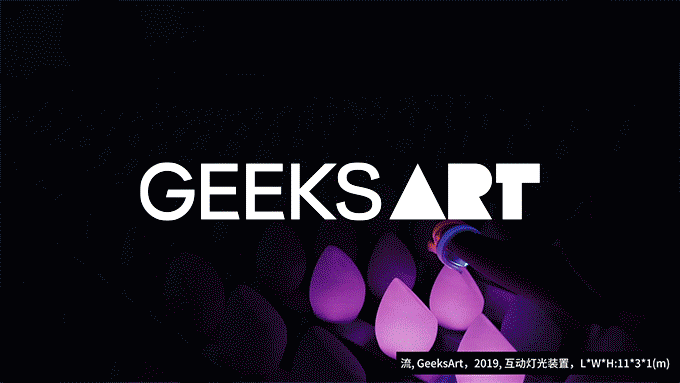秉持以“先舒适,再好看”的品牌理念,MOMO ERA在浦东前滩委托多么工作室打造第二家实体门店。设计之初,在我们面前有两个大方向可以选择。第一种是趋同大多数的商业空间策略,在塑造空间品质时,迎合前滩的商业感——作为一个聚焦“新奢”生活方式的商业新核心,其客流追求效率之上的精致、精准与直白的感官体验。当所有的街区连接起来,它们构成一幅整体的都市玻璃盒景观,街道立面趋于均质、通透,却也往往显得冷峻与疏离。第二种是在尊重商业规律的前提下,期待有一种新的品牌叙事空间方式,能在这个同质化的商业大环境下跳脱出来。对此,我们选择了后者。
Adhering to the brand philosophy of “Comfort First, Aesthetics Follow,” MOMO ERA commissioned Atelier d’More to design its second physical store in Shanghai’s Qiantan, Pudong.From the outset, we faced two distinct design directions. The first was to align with the prevailing commercial spatial strategy—crafting a space that caters to Qiantan’s upscale business ambiance. As a rising hub for “neo-luxury” lifestyles, this district attracts visitors who prioritize efficiency-driven sophistication, precision, and unabashed sensory appeal. When all its blocks interconnect, they form a seamless urban landscape of glass-box architecture, where uniform, transparent street facades often exude a sense of sterility and detachment.The second direction sought to redefine brand storytelling within commercial spaces, striving to break free from the homogenized retail environment while still respecting market logic. We chose the latter.
迎风 Facing the Wind
项目选址位于一片商业裙房的沿街一楼转角,空间入口正对街区的广场花园,外立面是连续的玻璃幕墙,有燃气管道正好在立面的转角端部,削弱了人流往这个方向的导向性,再加之沿街的建筑入口上没有雨棚构件,原本能直接吸引街区人流的入口,实际却成了摆设。这是对外空间上的明显缺陷。为了能最大化地打开沿街入口形象,我们解开了原本固有的玻璃盒外衣,取而代之的是在附加的外挑连续屋檐下,将室外广场砖继续延申进新的室内外边界——弧形玻璃面在入口处向内凹陷后,一头接上原空间边界,另一头接上从室内探出并包裹住室外燃气管道的体块,犹如被风吹散出的入口内退灰空间,打破了原先紧绷的沿街玻璃幕墙印象,形成一种非连续的、有松弛的立面形态。
The site is located at a street-level corner of a commercial podium, with the entrance facing the district’s plaza garden. The façade originally featured continuous glass curtain walls, but a gas pipeline running along the corner edge disrupted pedestrian flow conditionality. Additionally, the lack of a canopy over the entrance—despite its prime location—rendered this potential gateway ineffective, creating an obvious spatial flaw in the external design.To maximize the street-facing entrance’s presence, we shed the rigid “glass box” envelope. Instead, under an extended cantilevered eave, we blurred the boundary between indoors and outdoors by continuing the plaza’s paving tiles into the transitional space. Here, a curved glass surface recesses inward at the entrance, connecting on one end to the original spatial boundary and on the other to a new volumetric element that wraps around the exterior gas pipeline. Like a breeze carving out space, this intervention disrupts the taut uniformity of the street-facing glass façade, creating a discontinuous, relaxed elevation with deliberate asymmetry.
游亭 Wandering Pavilion
基于场地原有的结构柱、管道等构筑物形成了空间中五个独立但相互呼应的豆沙色体块,作为试衣间和仓库。体块上方在接近顶面处内收,以便吸收更多光线进入室内,同时消除了体块原本直上直下的厚重感。造型的轮廓很像攒顶亭子。由于每个攒顶的受力位置各不相同且未必都在正中,故而其样式更舒展自由。特别是在沿室外面入口的体块,为了能吸收到更多的光线,在原本已是复杂的立面环境下,硬是凿出涌入光线的洞口,这些通光的洞口和内收的轮廓看起来也像风在高处经过留下的痕迹。同时,因为一些特殊位置有横向燃气管道的存在,我们通过包裹,形成了“过桥”造型。
Five independent yet interconnected adobe-red volumes—housing fitting rooms and storage—emerge from the site’s existing structural columns and pipelines. Each volume tapers inward near the top to draw in more natural light while softening its monolithic heaviness.Their silhouettes evoke traditional “cuán dǐng” pavilion roofs, but with a contemporary twist: the load-bearing points vary unpredictably, liberating the forms from symmetry. The volume near the entrance pushes this further—despite the already complex façade, we carved out light wells to flood the interior. These apertures and the recessed contours resemble “traces of wind brushing past at height”.Where horizontal gas pipelines intrude, we enveloped them into arched “bridge” structures—a pragmatic yet poetic resolution.
基于五个体块所处的位置,空间功能组织上形成了三个主题陈列分区、九间试衣间、一个中心辐射的收银区,形成“试衣间-试衣镜-休息区-收银台”这样一条紧密的动线关系,以增加成交率。通往商场和街道的双入口设置,使得陈列路径能接续整个场所客流,提升逛店效率与停留时间。我们以手工雕塑般的方式对空间进行拓扑性演绎:在“拉伸”、“扭曲”的形态操作下,空间依靠体块而非墙体形成了有机的若即若离的关系,被自然地分化出具有不同尺度、围合感与光氛围的子空间,使得原本可能单一的采买路径变成游走的循环流线。
The five volumes orchestrate a spatial symphony—three thematic display zones, nine fitting rooms,and a radial checkout area—strategically linked by a tight “fitting room-mirror-lounge -checkout” circuit designed to maximize conversion rates. Dual entrances (to the mall and street) extend the display path to capture foot traffic from both directions, optimizing browsing efficiency and dwell time.We sculpted the space topologically, as if molding clay: through “stretching” and “twisting” gestures, the volumes—not walls—define fluid, semi-connected sub spaces. Each zone emerges with its own scale, enclosure, and light quality, transforming a linear shopping route into a meandering loop that invites exploration.
观云 Cloud spotting
为了平衡攒顶棱角硬朗的视觉感,我们将光膜轮廓塑造成柔和的形态,并沿空间长边方向顺势展开,以营造轻盈的视觉效果。同时在与白色顶面交接处,由于吊顶标高的差异,特殊设计了起拱式的造型连接面,从远近不同方向观看光膜,更富动态感。有处试衣间的攒顶正好在光膜下方,于是就留出一个采光口,从里抬头看,像极天光从顶口而泻。
To balance the sharp, angular visual impression of the cuán dǐng pavilion-inspired roofs, we sculpted the contours of the light membrane into soft, flowing forms that extend along the length of the space, creating an ethereal, weightless effect.At the junction with the white ceiling—where elevation differences occur—we introduced a custom arched transition, enhancing the dynamic quality of the light membrane when viewed from different angles.One fitting room’s cuán dǐng sits directly beneath this membrane, so we carved out a skylight-like opening. From inside, looking up, it appears as if natural light is pouring down from above—like a shaft of sunlight breaking through the clouds.
循林 Following the Forest
为了打破陈列衣架方式的单一性,我们在空间中植入了置物架。功能上,它是用来摆放鞋、包、眼镜等货品。错落摆放的布局避免了陈列线过长的因素,而靠近试衣镜旁的设计,可以回应服饰选择时需要搭配的诉求;形态上,为了呼应体块攒顶上收的特点,似树干般由下而上呈自然扭曲,缓缓摇曳。展台和休息座位的设计则是在莱姆石地面的局部如土地轻轻隆起,形成胶粘石平台,最大化的贴近地面形态。立柱式置物架伴着“土坡”似从地面生长而出,视线在彼此间隙中互相渗透,串联起了整个陈列区面貌。
To break the monotony of traditional clothing racks, we integrated freestanding display shelves into the space. Functionally, these shelves hold shoes, bags, eyewear, and other accessories. Their staggered arrangement prevents overly linear merchandising, while their placement near fitting mirrors directly addresses the need for coordinated styling during outfit selection. Morphological, the shelves echo the tapered silhouette of the cuán dǐng volumes—their forms twisting upward like tree trunks, gently swaying as they rise. Meanwhile, display platforms and seating emerge from the limestone floor as if the ground itself has softly uplifted, forming textured aggregate stone surfaces that blend seamlessly with the terrain.The columnar shelves appear to grow from these “earth mounds”, their gaps allowing sight lines to permeate, visually stitching together the entire display area into a cohesive landscape.
似有风而过 As If Touched by Wind
如果衣领太紧,那就解开纽扣,迎风拂过脖颈;如果都市太快,那就放缓脚步,望风徐徐而过。
If the collar is too tight,unbutton it—let the breeze brush against your skin; if the city moves too fast, slow your steps—watch the wind pass by in its own time.
项目信息——
项目名称:MOMO ERA STUDIO 前滩店
Project name: MOMO ERA STUDIO,Qiantan Store
项目类型:商业建筑,商店,时装店
Project type: Commercial Architecture, Store, Fashion Store
设计方(建筑改造/室内设计/道具设计):多么工作室
Design: Atelier d’More
项目设计:2024年9月-2024年11月
Design Year: 2024.09-2024.11
完成年份:2025年3月
Completion Year:2025.03
设计团队:王维,陆志毅,盛乐,左一轩
Leader designer & Team: Wei Wang, Zhiyi Lu, Le Sheng, Yixuan Zuo
项目地址:上海,中国
Project location: Shanghai, China
建筑面积:300㎡
Building area:300㎡
摄影版权:有松影像-周浪行
Photo credit: SongImage-Langxing Zhou
客户:MOMO ERA STUDIO
Clients: MOMO ERA STUDIO
材料:莱姆石,无机涂料,桦木多层板,胶粘石
Materials: Lime stone, Inorganic coatings, Birch Plywood,Resin-Bound Aggregate
施工图协作:璇玑深化
CD collaborator: Xuanji Design
施工团队:上海康业装饰
Construction Team:Kangye Construction and Decoration
照明设计:集未及照明
Lighting Design:JVG
道具制作:森美木见
Prop production: Thermory
石材供应:碧莎莱姆石
Stone supplier: Bisha Stone








































